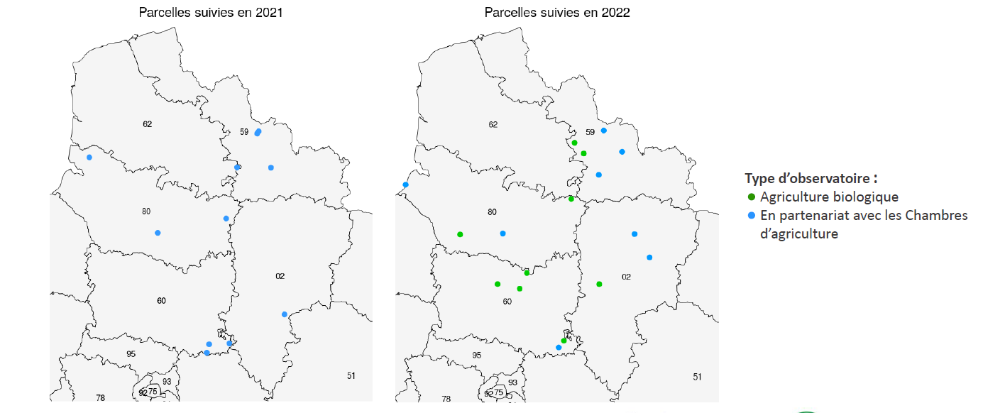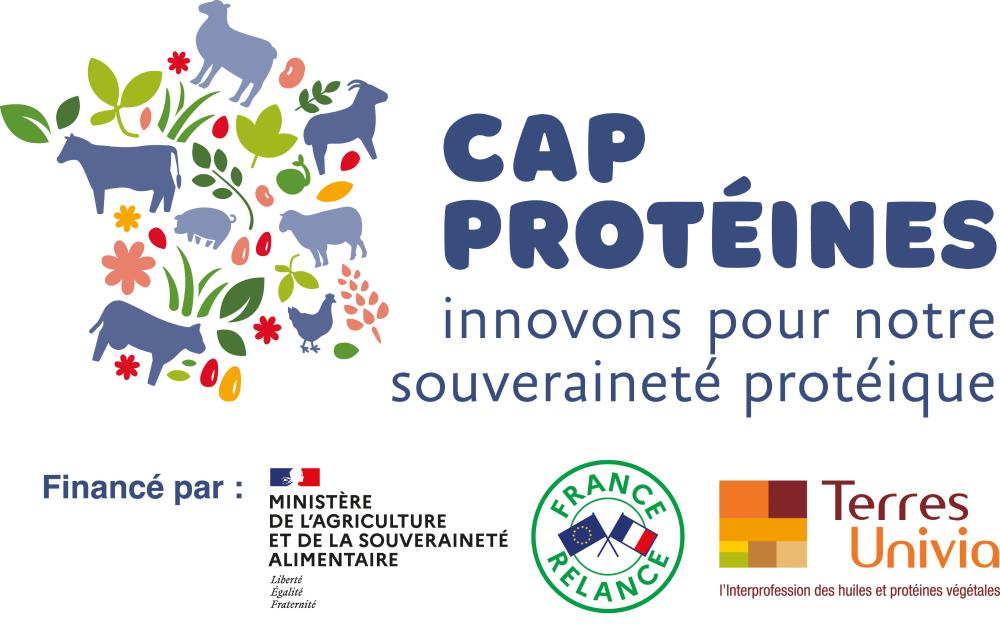Cap Protéines: soya observatories at the heart of the programme
Cap Protéines: soya observatories at the heart of the programme
In Hauts-de-France, six observatories have been carried out for the 2021 and 2022 campaigns within the framework of Cap Protéines (winter peas, rapeseed, sunflower and soya). The Hauts-de-France is a region with a diversity of agricultural production. With such a wide range of crops, the place of soya in our crop rotation and its profitability in relation to other already profitable crops raises questions.

In Hauts-de-France, 6 observatories were carried out for the 2021 and 2022 campaigns: 3 of these observatories concerned winter peas, rapeseed and sunflower; 3 others concerned soybeans. One observatory was carried out in partnership with the Hauts-de-France chambers of agriculture in 2021 and was renewed in 2022. Another observatory on soya was carried out in organic farming in 2022.
Why are we interested in soya in the Hauts-de-France?
Soy is a crop that is not very common in this region. The cold climate, the risk of late harvests and the absence of a soybean sector may be obstacles to the introduction of the crop in the region.
However, the inclusion of soybeans in a cropping system has its advantages: a contribution to protein autonomy, diversification of the rotation and agronomic advantages.
With the climatic changes of recent years and the registration of earlier varieties, the introduction of soybeans into the region's cropping systems is now possible. This is why several soya observatories have been set up in Hauts-de-France, to study the feasibility of the crop.
Return to the observatory in 2021
Eleven plots were monitored in 2021. The campaign began on 22 April with the first sowings, which lasted until 11 May. Due to a lack of good emergence, one plot had to be resown late on 4 June. Most of the varieties sown were very early varieties of group 000. The weather conditions were rather favourable from sowing (April-May) to flowering (July) in the whole region.
From flowering to maturity, the weather conditions differed within the region.
As a reminder, soybeans are sensitive to water stress from flowering to the first brown pod.
Nord-Pas-de-Calais benefited from good rainfall during the development of the yield components (number of pods and seeds, PMG). In Picardie, however, the soybeans were affected by the rather dry conditions.
Of the 11 plots monitored, 8 were harvested between 8 and 20 October with yields of 18 to 40 q/ha (18 to 29 q/ha in Picardy and 20 to 40 q/ha in Nord-Pas-de-Calais). 3 plots were not harvested because they were abandoned for the following reasons: high heterogeneity, heavy soiling and high pigeon pressure at planting. No plots were abandoned because of the cold weather in 2021, which is considered to be a hindrance to soybeans in Hauts-de-France.

Return on the 2022 observatories (still in progress)
10 plots are monitored within the framework of the observatory in partnership with the Chambers of Agriculture and 10 plots within the framework of the "organic agriculture" observatory.
The first sowings took place in mid-April and continued until the end of May. The weather conditions were less favourable than last year. The spring was marked by a drought that caused a heterogeneous emergence of the soybeans and weed control that was not always effective.
Because of these unfavourable conditions, 4 plots were abandoned because of heavy soiling, high heterogeneity and sometimes because of high pigeon pressure. The bad weather conditions continued during the summer with a strong lack of water in July and August. This lack of water had an impact on the non-irrigated soybeans, which sometimes had very few pods with small seeds.
Due to the climatic conditions, some soybeans could already be harvested early in September. In organic farming, the first harvests are giving yields of 11.6 to 16 q/ha.
Soybean profitability in Hauts-de-France
The Hauts-de-France is a region with a diversity of agricultural production. Cereals, fodder crops, beetroot, potatoes, oilseeds including rapeseed, industrial vegetables including peas and green beans, and protein crops such as protein peas and beans are produced. With such a wide range of crops, the place of soya in our crop rotation and its profitability in relation to other already profitable crops raises questions.
In 2020, the selling price of soya was 300-400 €/t. With high operating costs (≈ 460 €/ha) and yield targets of around 25 q/ha, soybean cultivation was hardly competitive with other crops present in the Hauts-de-France which are much more profitable.
However, the current context could well change things in favour of soya.
- Soy is a legume and does not require nitrogen. In a context where the price of nitrogen is high, this gain can be interesting.
- The selling price of soybeans has risen sharply since 2020, from 300-400 €/t to 600-700 €/t in two years. This increase in selling price could lead to a better gross margin and thus make the crop more profitable.
- Society and markets are changing in favour of soya.
In animal feed, the "non-GMO" market is expanding rapidly, favouring the production of French soya to the detriment of GMO soya exports from South America. In human nutrition, eating habits are changing. Meat consumption is declining, sometimes in favour of soyfood (vegetable drinks, vegetable steak, etc.), a market that is growing by 3-4% per year.
Although soya is not a competitive crop compared to other crops in Hauts-de-France, the current context could allow it to become a profitable crop in this region.
Contact: Maurane Pagniez m.pagniez@terresinovia.fr
